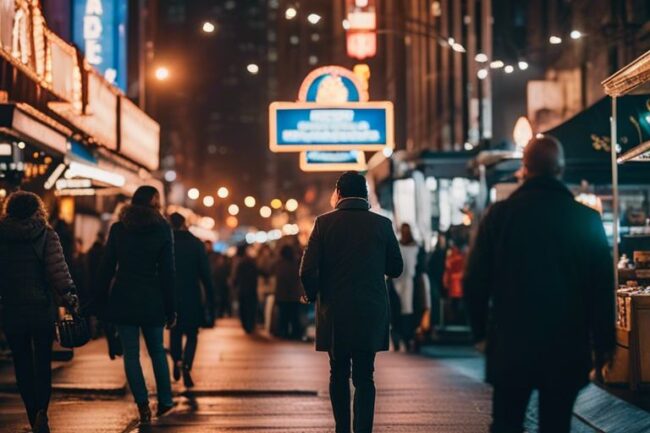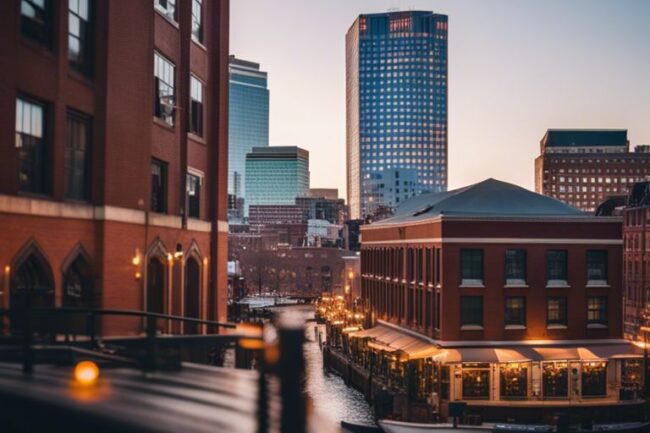Overwhelmed by the endless options in the city that never sleeps? Look no further! This comprehensive 2000-word guide will help you navigate New York City like a pro, covering everything from top event venues to must-try food spots and the trendiest neighborhoods to explore. Whether you’re a local looking for new hotspots or a visitor wanting to experience the city like a true New Yorker, this guide has got you covered. Get ready to immerse yourself in the vibrant culture and endless possibilities of the Big Apple!
Key Takeaways:
- Event Venues: Plan events in unique venues like the Bowery Hotel, Brooklyn Winery, and The Foundry for an unforgettable experience.
- Foodie Paradise: Explore diverse culinary options in NYC, from food trucks in Hudson Yards to Michelin-starred restaurants in Midtown.
- Neighborhood Gems: Discover vibrant neighborhoods like Williamsburg in Brooklyn and Greenwich Village in Manhattan for a taste of local culture and history.
Choosing the Right Event Venue in New York City
A
Types of Event Venues: From Historic Landmarks to Modern Spaces
Any event planner knows that choosing the right venue is crucial to the success of an event. In New York City, there is no shortage of options when it comes to event venues. From historic landmarks like The Plaza Hotel to modern spaces like the Glasshouses, the city offers a diverse range of settings to suit any occasion. Below is a breakdown of some popular types of event venues in the Big Apple:
| 1. Historic Landmarks | 4. Rooftop Gardens |
| 2. Modern Spaces | 5. Art Galleries |
| 3. Luxury Hotels |
This comprehensive list showcases the variety of event venues available in New York City, catering to different styles and preferences.
Factors to Consider: Capacity, Location, and Amenities
Right venue selection requires careful consideration of several factors. Capacity, location, and amenities are key elements that can make or break an event. Before choosing a venue, event planners should assess the following:
- Capacity: Ensure the venue can comfortably accommodate the expected number of guests.
- Location: Consider accessibility for attendees and proximity to transportation hubs.
- Amenities: Evaluate the facilities offered, such as catering services, audiovisual equipment, and parking.
This detailed analysis will help ensure that the chosen venue aligns with the event’s requirements and enhances the overall guest experience.
Plus, event planners should also take into account the venue’s flexibility, reputation, and potential for customization. By prioritizing these aspects during the selection process, event planners can narrow down their options and find the perfect venue for their event.
Tips for Finding the Perfect Venue: Insider Secrets and Tricks
One of the best ways to navigate the diverse event venue landscape in New York City is by leveraging insider secrets and tricks. From hidden gems to negotiating tactics, event planners can use the following tips to secure the ideal venue for their event:
- Knowing the off-peak seasons can help save on venue costs and increase availability.
With the right approach and insider knowledge, event planners can unlock unique venue opportunities that elevate their events and leave a lasting impression on attendees.
Mastering the Art of Food in New York City
Clearly, a trip to New York City would not be complete without indulging in the culinary delights the city has to offer. From world-renowned restaurants to hole-in-the-wall eateries, the Big Apple has something for every palate.
Types of Cuisine: From Classic New York-Style Pizza to Haute Cuisine
- New York-Style Pizza
- Bagels and Lox
- Delicatessen Sandwiches
- Hamburgers
- Haute Cuisine
Recognizing the diversity in the city’s food scene, it’s crucial to explore the various types of cuisine that define New York City. From grabbing a slice of classic New York-style pizza to dining at Michelin-starred restaurants serving haute cuisine, the options are endless.
| Classic New York-Style Pizza | Fold it in half and eat it on the go |
| Bagels and Lox | Spread cream cheese on a bagel and top with smoked salmon |
| Delicatessen Sandwiches | Don’t forget the pickles on the side |
| Hamburgers | Order it “medium-rare” for the juiciest burger |
| Haute Cuisine | Be prepared to make reservations well in advance |
Step-by-Step Guide to Ordering Like a Local: Foodie Etiquette
From blending in with the locals to understanding the unwritten rules of dining in New York City, knowing the foodie etiquette can elevate your dining experience to the next level.
| Local | Etiquette |
| Know Your Order Before Approaching the Counter | Speeds up the line for others behind you |
| Tip 15-20% at Restaurants | Standard practice in the city |
| Use Public Chopsticks at Asian Restaurants | Avoid using personal chopsticks for communal dishes |
| Ask Before Taking Photos | Respect other diners’ privacy |
| Don’t Haggle Over Prices | Especially in food markets and street vendors |
Understanding the local foodie etiquette can make your dining experience smoother and more enjoyable. By following these simple tips, you’ll navigate the New York City dining scene like a pro.
Pros and Cons of Popular Food Delivery Services: What to Expect
On-demand food delivery services have revolutionized the way New Yorkers enjoy meals from the comfort of their homes. However, it’s crucial to weigh the pros and cons before deciding on which service to use for your next meal.
| Pros | Cons |
| Convenience of having food delivered to your doorstep | Potential for delays during peak hours |
| Large selection of restaurants to choose from | Delivery fees and service charges can add up |
| Ability to track your order in real-time | Packaging waste and environmental impact |
| No need to leave your home, especially in bad weather | Potential for order accuracy issues |
| Offers contactless delivery for safety | Lack of direct interaction with the restaurant staff |
Before placing your next food delivery order, consider these pros and cons to ensure a seamless dining experience from the comfort of your own home.
Exploring New York City’s Diverse Neighborhoods
A Brief History of NYC Neighborhoods: From Settlement to Gentrification
All throughout New York City’s history, its neighborhoods have continually evolved. From the initial settlements of Native American tribes to the waves of European immigrants in the 19th century, each neighborhood has its own unique story to tell. As the city grew and changed, neighborhoods like Harlem, Greenwich Village, and Williamsburg went through periods of decline and revitalization, with gentrification playing a significant role in reshaping the landscape of NYC.
Tips for Navigating Neighborhoods Like a Pro: Safety, Transportation, and Hidden Gems
When exploring New York City’s diverse neighborhoods, it’s imperative to prioritize safety while navigating the bustling streets. Understanding the public transportation system, such as the subway and buses, can help you get around efficiently. Don’t be afraid to venture off the beaten path and discover hidden gems, such as charming cafes, street art, and local shops that add character to each neighborhood.
- Avoid walking alone in desolate areas, especially at night.
- Use reputable ride-sharing services or taxis for late-night journeys.
- Explore neighborhoods during daylight hours to get a feel for their vibe.
Plus, immerse yourself in the local culture by attending community events, farmers’ markets, and festivals that capture the essence of each neighborhood. Engaging with residents and business owners can provide insider tips on the best places to eat, shop, and explore off the beaten path. Let your curiosity guide you as you uncover the hidden treasures of New York City’s neighborhoods.
Factors to Consider When Choosing a Neighborhood: Demographics, Noise Level, and Accessibility
When deciding on a neighborhood to visit or reside in, it’s crucial to consider various factors that will affect your experience. Demographics play a significant role in shaping the atmosphere of a neighborhood, from family-friendly areas to vibrant artistic communities. Noise levels can vary greatly across NYC neighborhoods, with some being quieter residential enclaves and others vibrant hubs of activity. Accessibility to public transportation, parks, grocery stores, and other amenities can also impact your daily life in a neighborhood.
- Research the demographics of a neighborhood to ensure it aligns with your lifestyle and preferences.
- Visit the neighborhood at different times of the day to gauge noise levels and overall ambiance.
- Consider the proximity of imperative services and facilities to make your daily routine more convenient.
Noise pollution is a common concern in densely populated urban areas like New York City. Each neighborhood has its unique noise profile, influenced by factors such as proximity to highways, nightlife venues, and commercial districts. Understanding the noise level of a neighborhood can help you choose a living or lodging situation that aligns with your comfort and preferences.
Planning an Unforgettable Event in New York City
Unlike planning events in other cities, organizing one in New York City requires a specific set of skills and knowledge to ensure its success. From finding the perfect venue to managing vendors and creating an unforgettable experience for your guests, there are many factors to consider.
Step-by-Step Guide to Event Planning: From Concept to Execution
Execution
| Concept | Have a clear idea of the type of event you want to host, the budget, and the target audience. |
| Planning | Research venues, create a timeline, negotiate contracts, and secure necessary permits. |
| Execution | Coordinate with vendors, set up the venue, manage logistics, and oversee the event. |
| Follow-Up | Send thank you notes, gather feedback, and evaluate the success of the event. |
Tips for Working with Vendors: Communication, Contracts, and Expectations
Even the most well-planned event can be derailed by miscommunications or misunderstandings with vendors. To ensure a smooth and successful collaboration, follow these vital tips:
- Clearly communicate your expectations and vision for the event.
- Negotiate and sign contracts that outline deliverables, timelines, and payment terms.
- Provide vendors with all necessary information and materials well in advance.
Assume that proactive communication and a positive attitude can go a long way in building strong relationships with vendors and ensuring a successful event.
Factors to Consider: Budget, Timeline, and Guest Experience
On top of the to-do list when planning an event in New York City is defining your budget, establishing a timeline, and designing a memorable guest experience. Pay attention to the following factors:
- Set a realistic budget that covers all expenses, including venue, catering, entertainment, and decorations.
- Establish a detailed timeline with milestones for planning, promotion, and execution of the event.
- Perceiving the event from the guests’ perspective will help you tailor the experience to their expectations and preferences.
Vendors play a crucial role in bringing your event vision to life, so choose them wisely based on their expertise, reputation, and compatibility with your event goals.
Insider Secrets for Making the Most of Your NYC Experience
Pros and Cons of Popular NYC Attractions: What’s Worth Your Time
Your visit to New York City wouldn’t be complete without checking out its iconic attractions, but it’s important to know which ones are worth your time. Here’s a breakdown of the pros and cons of the most popular NYC sites:
| Attraction | Pros and Cons |
| Times Square | Pros: Vibrant atmosphere, Broadway theaters Cons: Crowded, touristy |
| The Statue of Liberty | Pros: Iconic symbol of freedom, boat ride views Cons: Long lines, limited access |
| Central Park | Pros: Beautiful green oasis, recreational activities Cons: Can get crowded, easy to get lost |
Tips for Avoiding Tourist Traps: Authentic Experiences and Local Favorites
Popular tourist attractions can sometimes feel overwhelming or generic. To truly experience NYC like a local, consider exploring these authentic and off-the-beaten-path gems:
- Visit local markets like Chelsea Market or Smorgasburg for unique food experiences
- Explore neighborhoods like Williamsburg in Brooklyn or Astoria in Queens for a taste of local culture
Authentic experiences allow you to immerse yourself in the true essence of NYC, away from the hustle and bustle of typical tourist spots. Thoroughly researching local favorites can lead you to hidden gems that will make your trip unforgettable.
Factors to Consider: Weather, Crowds, and Seasonal Events
When planning your NYC itinerary, it’s crucial to factor in the weather, crowds, and any seasonal events that may impact your experience. Here are some key considerations to keep in mind:
- Check the weather forecast before packing to ensure you’re prepared for any conditions
- Avoid peak tourist seasons like summer and major holidays to enjoy a more relaxed visit
Little details like the weather can greatly impact your enjoyment of outdoor activities or sightseeing tours. By planning around crowds and seasonal events, you can maximize your NYC experience and make the most of your time in the city.
With so much to see and do in New York City, these insider tips will help you navigate the bustling metropolis like a pro. By prioritizing authentic experiences, planning around crowds and weather, and carefully selecting which attractions to visit, you can make the most of your NYC adventure.
Staying Safe and Healthy in New York City
Now, let’s talk about how to stay safe and healthy while exploring the vibrant streets of New York City.
Tips for Staying Safe: Awareness, Caution, and Emergency Preparedness
- Stay alert and aware of your surroundings at all times.
- Avoid poorly lit or deserted areas, especially at night.
- Keep your belongings secure and be cautious of pickpockets in crowded places.
- Program emergency numbers into your phone and have a physical map of the city on hand.
Recognizing potential risks and staying prepared for emergencies can make all the difference in ensuring a safe and enjoyable visit to the city.
Factors to Consider: Health and Wellness, Medical Facilities, and Emergencies
- Make sure to have travel insurance that covers medical emergencies.
- Know the location of the nearest hospitals or urgent care facilities in the areas you plan to visit.
- Carry necessary medications, especially if you have pre-existing conditions.
Assume that unexpected situations can arise, and it’s better to be prepared than caught off guard.
Understanding the Pros and Cons of Popular NYC Fitness Trends: What Works and What Doesn’t
Plus, understanding the pros and cons of popular fitness trends in New York City can help you make informed decisions about your wellness routine.
The following table breaks down the pros and cons of some of the most popular fitness trends in NYC:
Table: Pros and Cons of Popular NYC Fitness Trends
| Pros | Cons |
|---|---|
| High intensity, effective workouts | Increased risk of injury |
| Community support and motivation | Costly memberships |
The fitness scene in NYC is diverse, catering to various preferences and fitness goals. By weighing the pros and cons of different trends, you can find the right fit for your lifestyle and needs.
Final Words
On the whole, “New York City Like a Pro – A 2000-Word Guide to Event Venues, Food, and Neighborhoods” offers a comprehensive look at the vibrant city of New York, providing insights into its diverse event venues, culinary scene, and unique neighborhoods. Whether you are a local looking to explore new spots or a visitor planning an event, this guide serves as a valuable resource. For even more options and information on event spaces, you can check out the 16 Best Event Spaces for Rent in New York City, NY at Tagvenue.
FAQ
Q: What are some popular event venues in New York City?
A: Some popular event venues in New York City include The Plaza Hotel, The Bowery Hotel, and Cipriani Wall Street.
Q: Where can I find the best food in New York City?
A: For the best food in New York City, you can visit places like Katz’s Delicatessen, Peter Luger Steak House, and Le Bernardin.
Q: What are some must-visit neighborhoods in New York City?
A: Some must-visit neighborhoods in New York City are Greenwich Village, Williamsburg, and Harlem.
Q: How can I experience New York City like a pro?
A: To experience New York City like a pro, you should explore different neighborhoods, try local cuisine, and attend events at iconic venues.
Q: What are some tips for navigating New York City like a local?
A: Some tips for navigating New York City like a local include using public transportation, walking as much as possible, and avoiding Times Square during peak hours.


